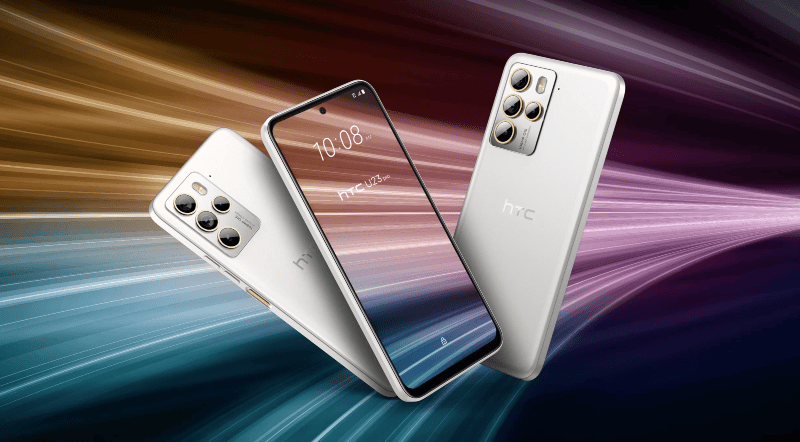When hearing the word “HTC” many of a certain generation may nostalgically recall the early days of the smartphone revolution, when the Taiwanese company appeared to be the only one capable of competing with Apple. After selling off a large portion of its smartphone business to Google and shifting its attention to VR with the Vive headsets, the company is now a considerably weaker force. However, HTC still has a little stake in the smartphone market, and the HTC U23 Pro is a surprising and intriguing new mid-range competitor. Formerly known for its cutting-edge smartphone design work, HTC is now aiming for reliable affordability with the HTC U23 Pro. The HTC One M7 isn’t exactly brought back to life by its flat plastic rim, plastic back, and flat display. Despite the fact that there are flourishes, they are really subdued. For instance, that flat rim is very slightly inclined, creating the appearance that the phone’s back is smaller than its front. Additionally, the plastic back has a soft-touch surface that feels fairly velvety and has a subdued opulent appearance, particularly in the unique Coffee Black shade that my review model has and that leans dark brown in the light. If you choose, you may alternatively take the phone in a Snow White motion that is more conventional. For a mid-range phone, the U23 Pro’s display is protected by Gorilla Glass Victus, which is beautiful and durable. An IP67 rating also grants you certification against water and dusts that is virtually at almost flagship-level. The U23 Pro’s 6.7-inch OLED screen boasts a Full HD+ resolution and a 120Hz refresh rate according to HTC. It’s particularly encouraging to see 120Hz enabled by default rather than having to fumble around in the options menu. That seems like a competitive specification list. On the other hand, this is among the most unpleasant displays we’ve used recently. It mostly boils down to the very vivid colors on the screen.
The Qualcomm Snapdragon 7 Gen 1 mid-range processor, which hasn’t been used in many phones up to this point, powers the HTC U23 Pro. The HTC U23 Pro has a respectable performance, allowing you to switch between apps and browse menus at a smooth 120Hz. The fingerprint sensor isn’t the fastest method for unlocking the phone, as was described in the preceding section. Although the HTC U23 Pro performs admirably for its class, we can find far speedier options for the same price or even less. The supply of 256GB of internal storage as standard, with the possibility for extra through a microSD card, is one last noteworthy feature. A 108MP primary sensor with OIS and EIS and a large f/1.7 aperture serve as the setup’s pillars. This produces images with enough illumination that are fairly crisp and pleasingly natural-looking. Contrary to the practice of many mid-range manufacturers, HTC doesn’t oversaturate its color palette. The secondary cameras are also nothing special, with the sole other noteworthy sensor being an 8MP ultra-wide. The 2MP depth sensor and 5MP macro are only really worth a passing mention because they are so hit-and-miss, with far more misses than hits. They are actually there, as usual, to increase the number of cameras in an effort to wow. Finding out that the HTC U23 Pro only has a 4600mAh battery is a bit of a surprise given its bulky, weighty design and extensive usage of plastic. I had anticipated a typical 5000mAh cell. The U23 Pro can accept cable charging up to 30W, although HTC doesn’t offer a charger in the package. All of this may sound very dismal, but the charging setup for the HTC U23 Pro has one major benefit. 15W wireless charging is supported. Although it’s not as unique of a mid-range trait as it formerly was, it’s still uncommon.
In-Depth Technical Details Of HTC U23 Pro

| Feature | Specification |
|---|---|
| Body | 166.6×77.1×8.9mm, 205g; plastic body; IP67 dust/water resistant. |
| Network | 2G, 3G, 4G, and 5G. |
| Display | 6.7″ OLED, 120Hz, 1080x2400px resolution, 20:9 aspect ratio, 393ppi. |
| Chipset | Qualcomm Snapdragon 7 Gen 1 (4nm). |
| Memory | 256GB 8GB RAM, 256GB 12GB RAM; microSDXC. |
| OS | Android 13 (1st Release). |
| WLAN | Wi-Fi 802.11 a/b/g/n/ac/6e. |
| Bluetooth | v5.2. |
| Rear camera | Wide (main): 108MP; Ultra-wide: 8MP; Macro: 5MP. |
| Front camera | 32MP. |
| Battery | 4600mAh; 30W wired, 15W wireless, 5W reverse wireless, Reverse wired. |
| Others | Fingerprint reader (side-mounted); NFC. |
Conclusion
The HTC U23 Pro is not an inexpensive gadget, as has been stated several times. Although it is officially the HTC’s headliner, it is only a result of the company’s lack of superior hardware. It cannot objectively compete with headline services from rival companies. In truth, the majority of the HTC U23 Pro’s rivals are considerably less expensive. Simply put, the value proposition is poor. There are cheaper options for superior hardware available. Despite this, costs are continuously fluctuating, therefore it is always a good idea to try to analyze a phone as a product in general. There are several features of the HTC U23 Pro that we really like. It has a wonderful, elegant design. An IP67 ingress protection certification and the incorporation of Gorilla Glass Victus are both well regarded and stand out in the midrange. A 3.5mm audio connector, an RGB notification LED, and a powerful USB 3.0 Type-C interface with video output are other features we enjoy. Unfortunately, the HTC U23 Pro struggles to master many fundamentals. The display might be brighter and more color-accurate, the bezels are rather obvious, and the handling of the high refresh rate is quite unsatisfactory. The camera experience is at most passable, and the battery life is dismal. The HTC U23 Pro, in all honesty, fell a little short. Even though it’s a midrange phone, we had much higher expectations for HTC’s comeback to the international phone industry.
